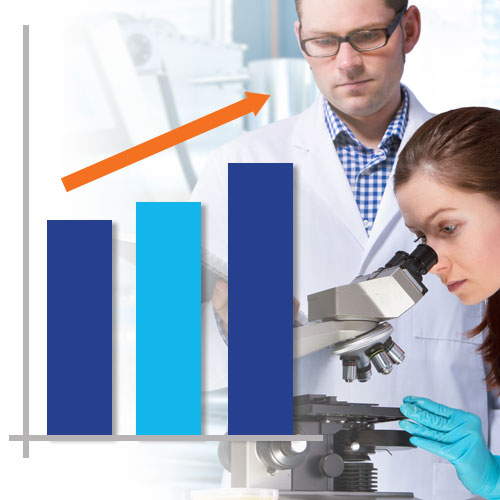What to Expect in 2016
We’re officially into the second half of 2015 and, inevitably, smack dab in the “Summer Doldrums.”
While a good portion of the world takes their holiday at this time of year, BioInformatics is in the midst of preparing its most comprehensive report, The 2016 Global Life Science Funding and Budget Outlook.
Comprised of both secondary and primary research sections, the report will clearly and concisely project the total amount of government and private sector funding in the U.S., Europe and Asia. To gain a better understanding of what percent of the funding will translate into sales for life science tools companies, the report will feature a global survey (N=1,000) of academic, pharmaceutical and biotechnology scientists. These scientists will be asked to predict their laboratories’ 2016 budgets for instruments and consumables in all major product categories.
Economic Framework
For the United States, our preliminary analysis suggests that modest growth in funding for the life sciences will continue in 2016. The President’s proposed budget calls for an approximate 5% increase in federal support for R&D at the major institutions conducting life science research. Research and development at U.S. pharmaceutical and biotechnology companies, however, is expected to remain flat or even decline as changing market conditions and business models pressure companies to focus less on R&D and more on the bottom line. Multinational companies will likely continue to experience weakened foreign revenues due to the increased strength in the dollar. A trend that appears to poised continue or worsen into 2016. The torrid pace of M&A activity in the pharmaceutical and biotechnology industries is likely to continue along with the associated impact of discontinued R&D that does not fit with the larger company’s portfolio or early-stage research considered too risky to pursue.
Somehow, innovation survives and a surge of interest in new and efficient approaches such as CRISPR/Cas9 and mobile, digital, and big data IT healthcare applications have infused hundreds of millions of venture capital dollars into the market. And, we’d be remiss to not mention that 2016 is a pivotal year for the R&D needle with the Presidential elections taking place in November.
As you well know, the sluggish recovery of advanced economies since the Great Recession, especially in Europe, has resulted in austerity policies that have negatively affected life science funding. Although public support for science remains high throughout Europe, persistent national debt crises and a weak euro have resulted in proposed cuts to several European Union R&D programs. And as seen in recent news, the ECB, IMF, and European Commission (known collectively as The Troika) are facing some increased pressure within the Eurozone with Greece’s default and deadlocked negotiations, which will likely add even more strain to the currency and regional economies in the short term if Eurozone solidarity uncertainty continues deep into the second half of 2015. But, on a more positive note for European research, aggregate GDP has improved this year and cross-border collaboration continues to rise within the European Union and externally with the United States, according to the Science Europe Organization.
As we scan Asia, we’ll see that China is closing out the final year in its 12th Five Year Plan, which included significant investments in higher education, including healthcare and biotechnology. While China’s growth has stalled recently, we do expect the 13th Five Year Plan to outline similar levels of investment for the healthcare and biotech sectors. Indeed, many global pharmaceutical and biopharmaceutical firms have research centers in Asia, taking advantage of lower cost structures and the availability of well-trained workforce. While Asian economies, with the exception of Japan, are expected to outperform the rest of the world, their growth rates will be more moderate than seen in the past. Overall economic performance, however, does not necessarily equate to the level of life science funding in each country. For example, in Japan where only tepid growth is expected, the Prime Minister’s Revitalization Strategy will pump billions of dollars into scientific R&D.
Finally, we expect India to remain the bright spot of Asia, and quite frankly the entire world, as it has now surpassed China as the fastest growing large economy, benefitting greatly from reduced energy import costs and investments in infrastructure. As such, we expect scientific R&D to expand in India in upcoming years, and we look forward to our panelists input for affirmation.
Deliverable
The report will be broken into these sections:
Section 1
Overview and Regional Comparisions
Section 2-4
Market Analysis and Funding Situations of the United States, Europe and Asia, respectively
Section 5-6
Study Methodology and Demographics
Verbatim Comments from Survey Respondents
How to Sponsor this Report
We invite you you to find out more information (product mix, benefits of being a sponsor, etc) on our website or by giving us a call at 703-778-3080. The information contained in this indispensable report will enable senior management to forecast demand, fine-tune their projections for next year, set goals and allocate resources for 2016.





